797 Private John (Jack) McCulloch BRUCE – died of wounds on 29 July 1915
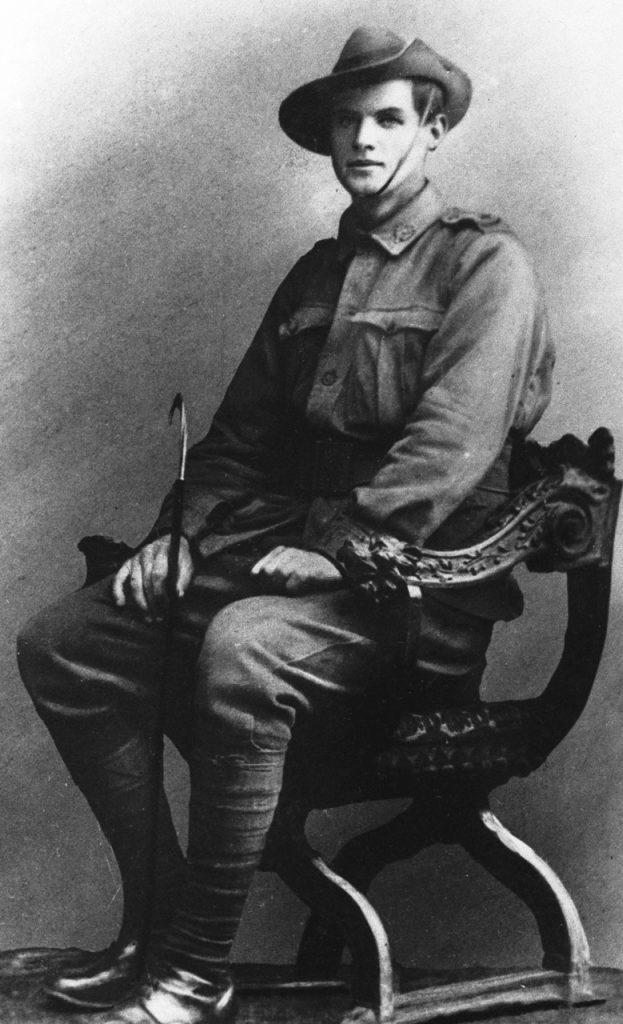
John McCulloch BRUCE was born in Adelaide on 16 December 1892, the second of three children of John BRUCE and Annie BRUCE (nee Lush).
Jack, as he became known, was educated at the Terowie Public School and when the family later moved to Victor Harbor, he worked as a butcher.
Jack enlisted in the AIF on 29 August 1914 at the age of 21 years eight months and was one of the earliest enlistees from the district. 797 Private BRUCE was posted to E Company of the newly raised 10th Battalion, Australian Infantry.
On 20 October 1914 the Battalion embarked from Outer Harbour on the HMAT A11 Ascanius. All aboard believed they were headed to Europe to fight in France. Orders were received on 27 November to proceed to Egypt where further training would be undertaken. After passing through the Suez Canal the troops disembarked at Alexandria on 7 December and travelled to Mena Camp, 16 kilometres from Cairo.
Turkey had entered the war as an ally of Germany and the 3rd Brigade, comprising the 9th, 10th, 11th and 12th Battalions, was selected as the advance force for an operation on the Gallipoli Peninsula. On 4 March 1915, the troops arrived on Lemnos Island where the Battalions disembarked and further training was undertaken.
The Australian area of operations on the Gallipoli Peninsula comprised rugged country of hills, gullies, slopes and sharp ridges and the terrain would prove a nightmare for an attacking force. It was estimated there 34,000 Turkish troops in the region.
The 3rd Brigade was to land in three waves, the first comprising 1,500 soldiers of elements of the 10th and 11th Battalions. They were to be taken to shore in rowboats initially towed by a small steamboat from three kilometres offshore. The landing was planned for 23 April but poor weather caused the postponement until 25 April. Pte BRUCE was to be one of the first troops ashore at Gallipoli.
Shortly after 0400 hours on 25 April the towboats cast off the troop carriers and the force proceeded quietly to shore just as the first light of dawn was breaking. Pte BRUCE and his fellow soldiers of 6 Platoon safely made it ashore without encountering any enemy fire. The Turks soon became aware of the invading force and directed machine gun and artillery fire on the Australians and inflicted heavy casualties. At 0810 hours, a Turkish frontal attack was repulsed as was another at 1400 hours.
The Turks brought in reinforcements and the fighting intensified with enemy snipers and artillery continuing to inflict casualties amongst the Australians. Casualties of two or three per day became common and on some days, up to 15 men were killed or wounded. On 19 May, the Turks launched a direct frontal assault but the Battalion stood firm and cut down the enemy soldiers in their hundreds.
On 31 May, the Battalion suffered further casualties from “bullets dropping out of the sky” when the Turks fired their rifles like mortars, using a high angle of projectory to drop the rounds into the Australian trenches. By the end of June dysentery was widespread on both sides and the numbers evacuated rose to high proportions. On 1 July the 10th Battalion was relieved by the 9th and the men looked forward to a rest in the rear trenches only to find they were being shelled more heavily than at the front.
On 14 July, Pte BRUCE was wounded and his condition was listed as critical. He was evacuated to the hospital ship HMS Gascon and admitted to the military hospital at Tigne Point, Malta on 18 July. Despite intensive treatment, Pte BRUCE died of his wounds on 29 July 1915. He was later buried in the Pieta Military Cemetery. Pte Jack BRUCE was the first World War One casualty from the Victor Harbor district.
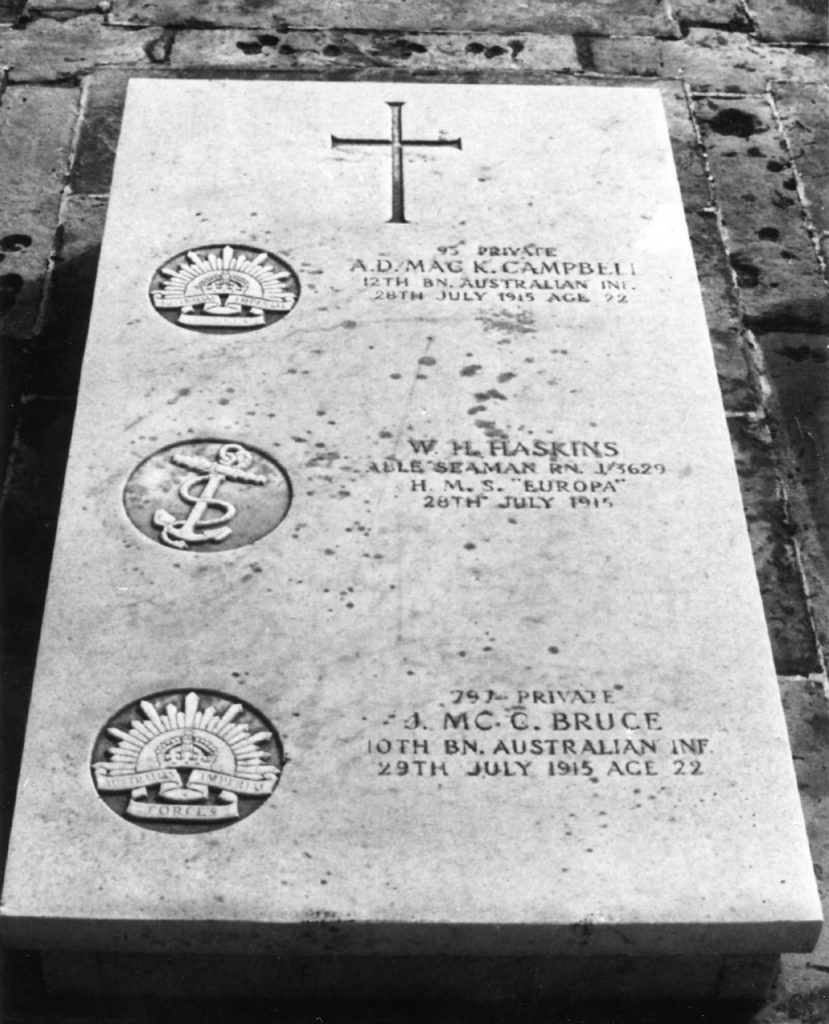
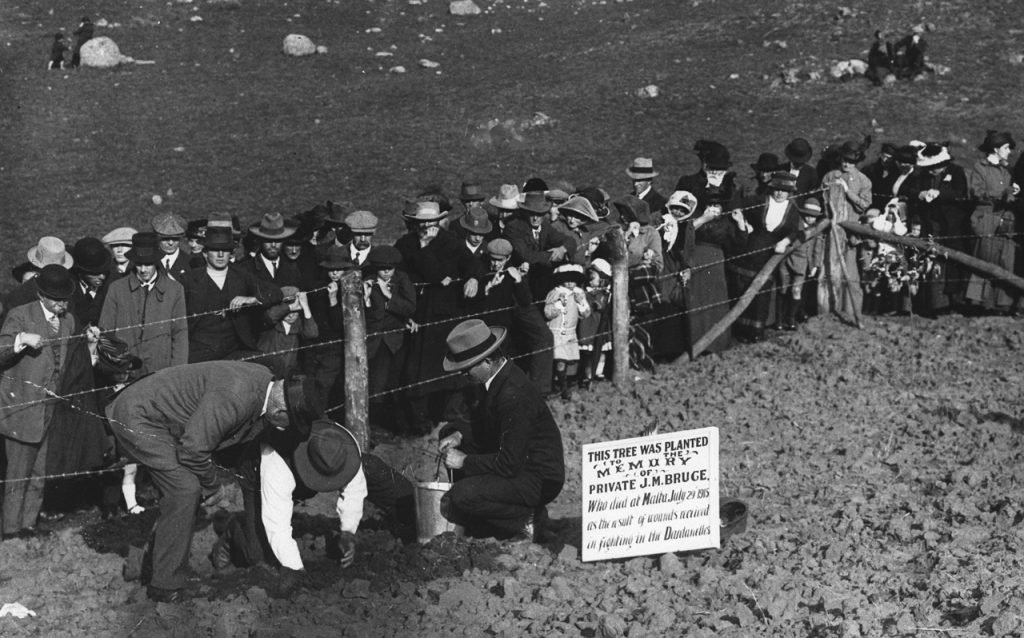
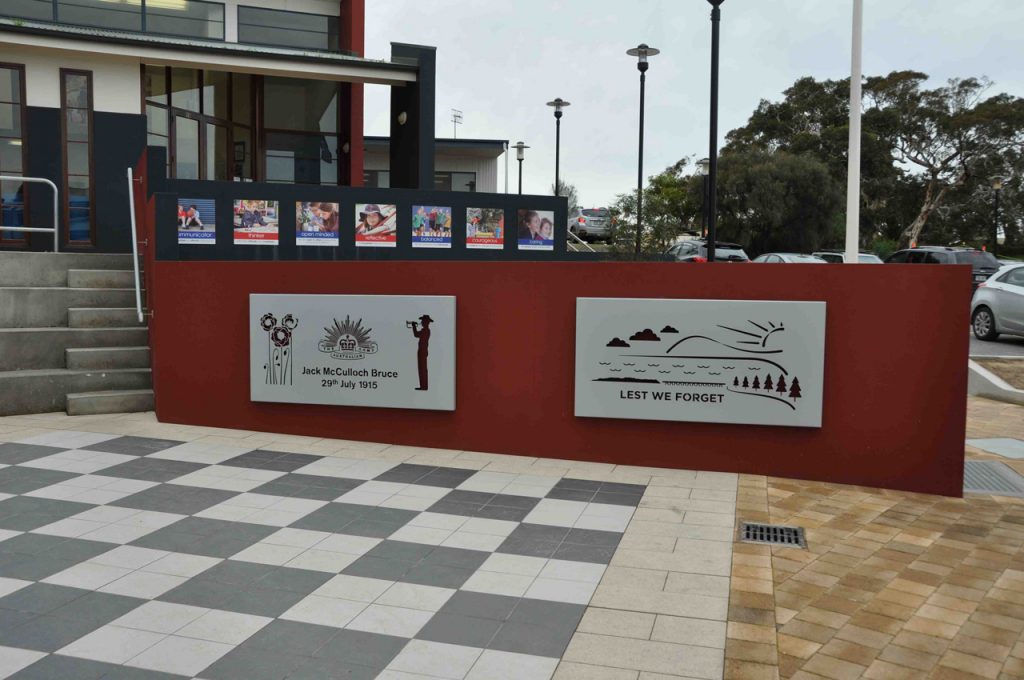
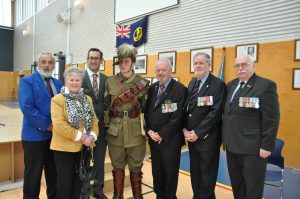
City of Victor Harbor Bandmaster Mr Brenton OSBORNE, City of Victor Harbor Deputy Mayor Mrs Pat Chigwidden, Encounter Lutheran College Principal Mr Kelvin GRIVELL, Lighthorseman re-enactor and Encounter student Hunta BRIDER, Victor Harbor RSL President Mr David MILLER, Victor Harbor RSL history research team member Lieutenant-commander Dean WATSON (retired) and Special Justice Mike McRAE JP. The College was commemorating the 100th Centenary of ANZAC and the dedication of the Pte Jack McCulloch BRUCE Memorial; this photograph was taken by Victor Harb or RSL History Research Team member of 29 July 2015.
Service file of 797 John McCulloch BRUCE, purchased from the National Archives of Australia (https://recordsearch.naa.gov.au/SearchNRetrieve/Interface/DetailsReports/ItemDetail.aspx?Barcode=3132648&isAv=N).
Australian War Memorial database (www.awm.gov.au).
Compiled by the RSL Victor Harbor Sub-branch History Research team (May 2009).

